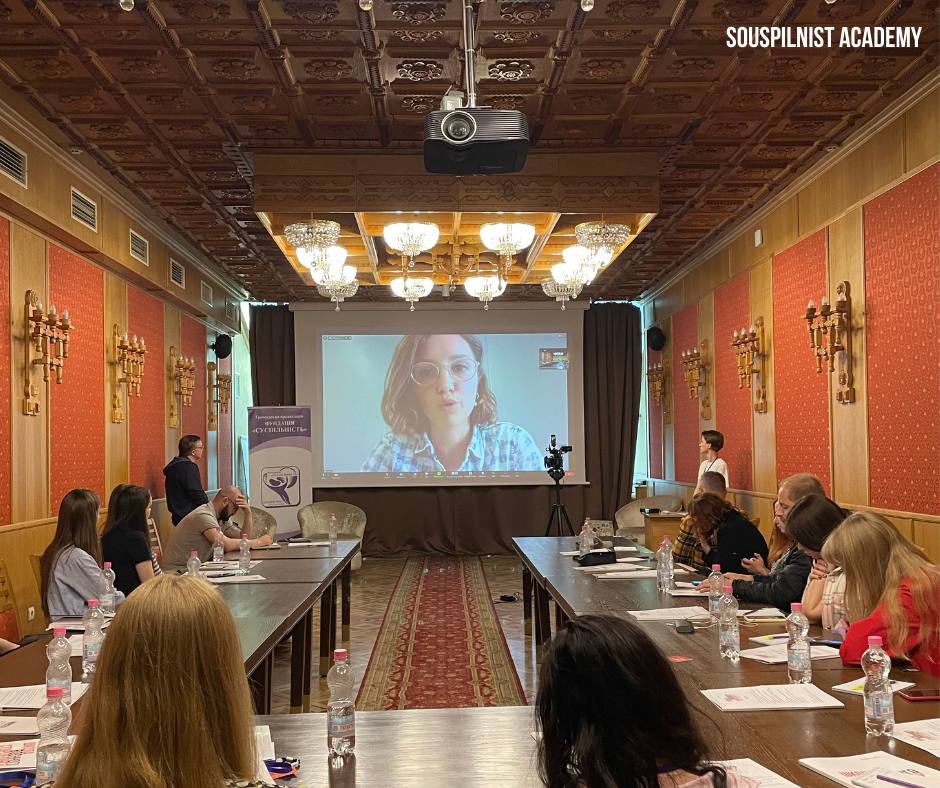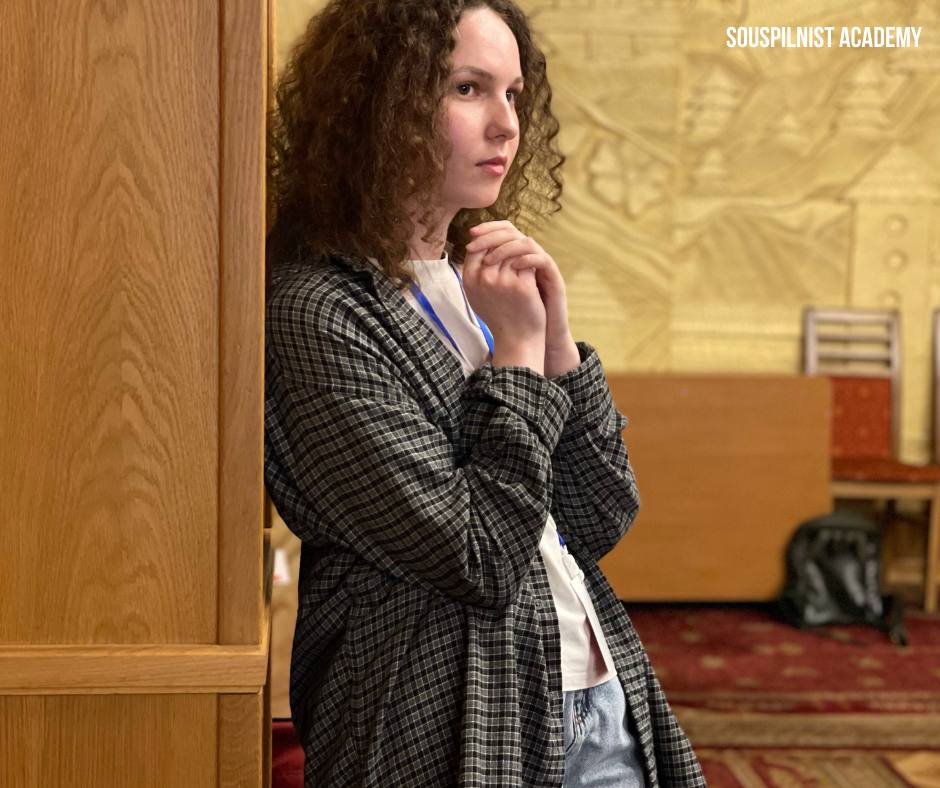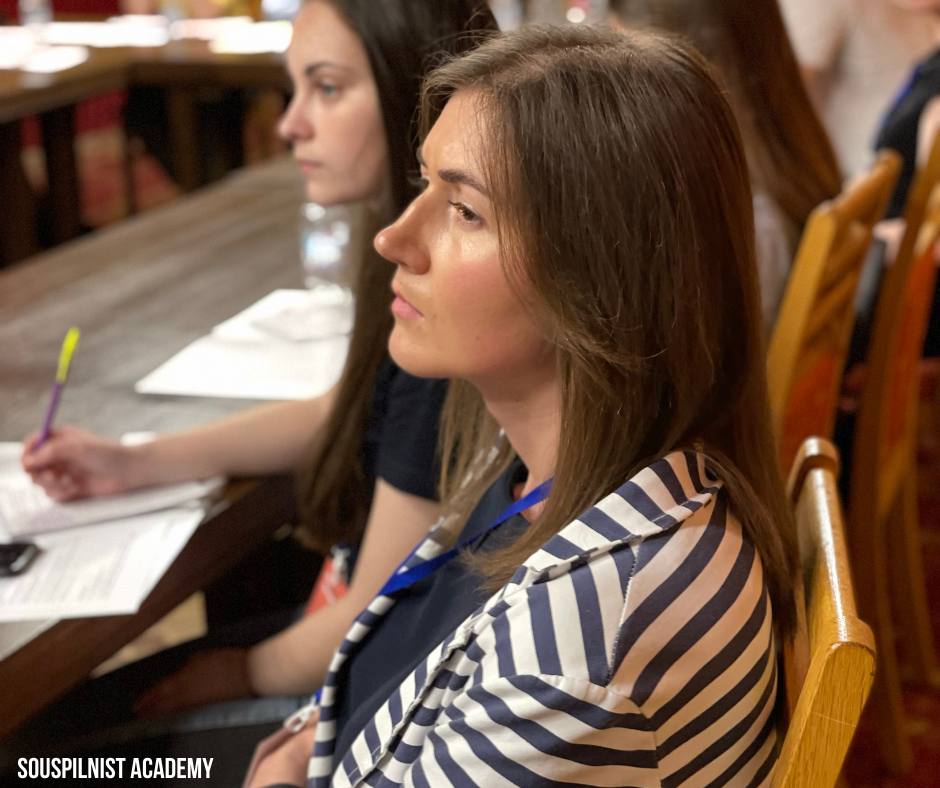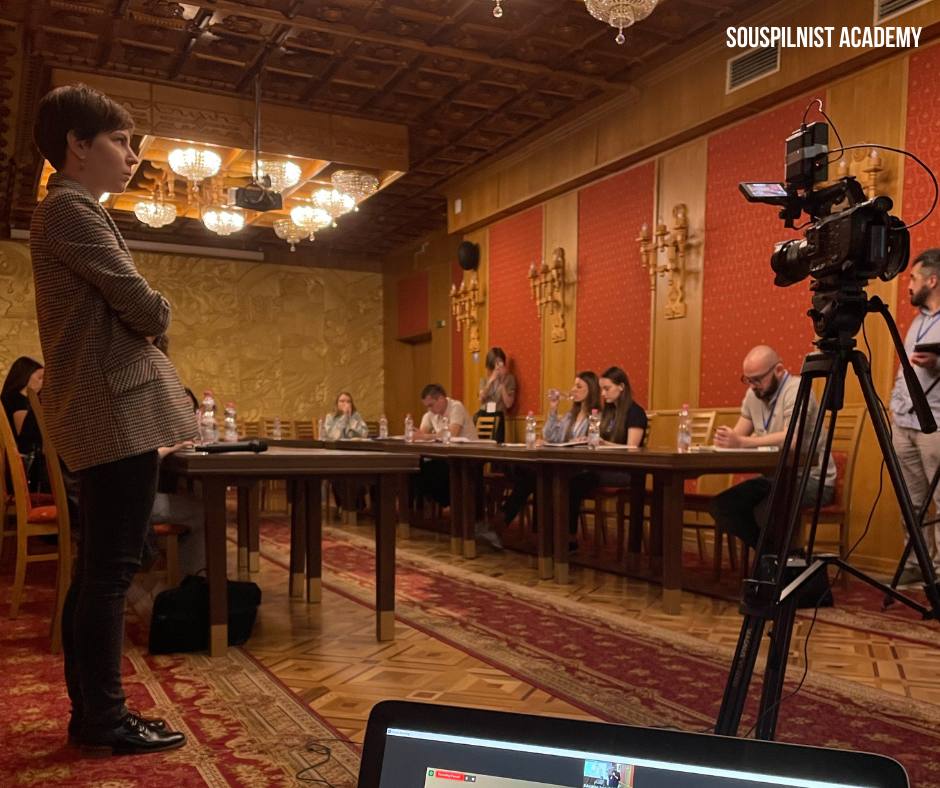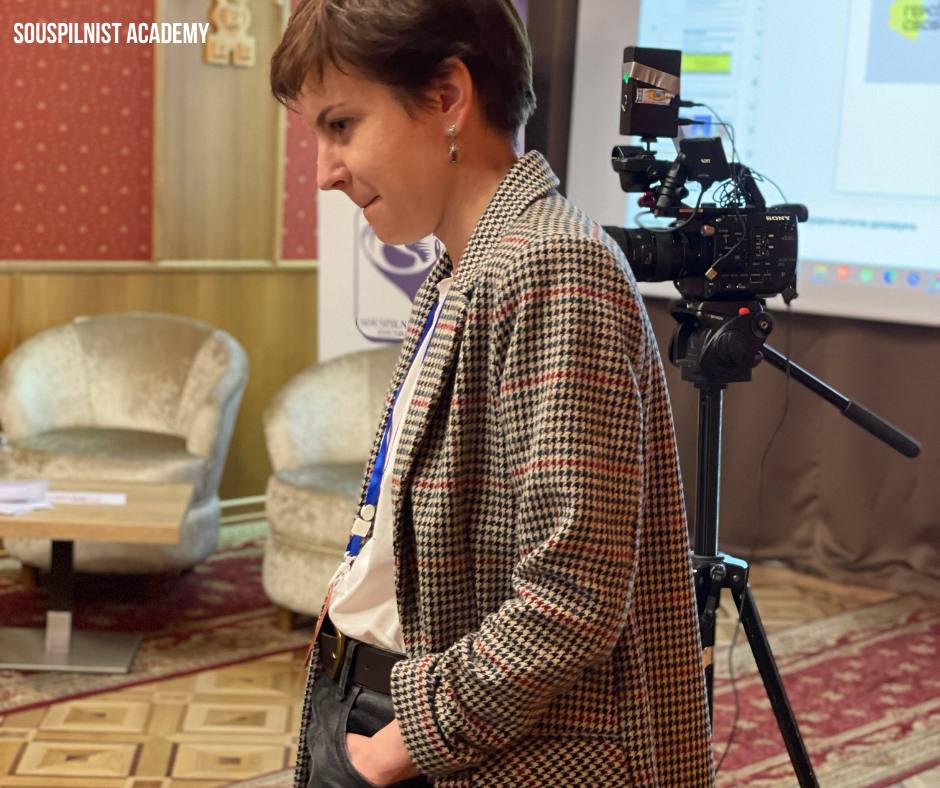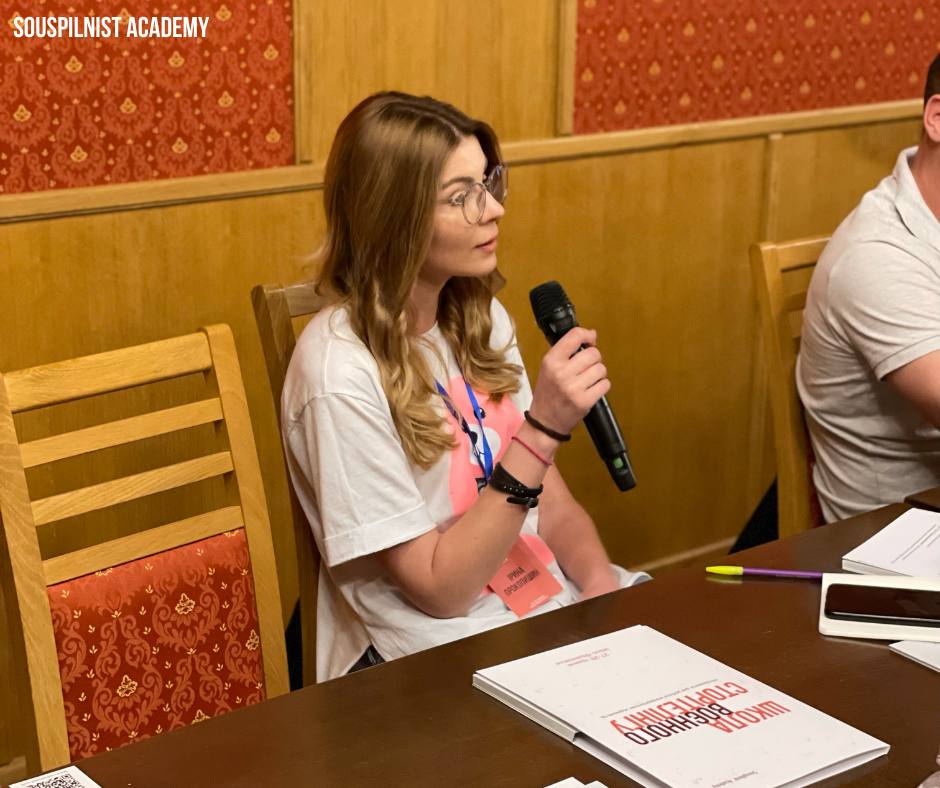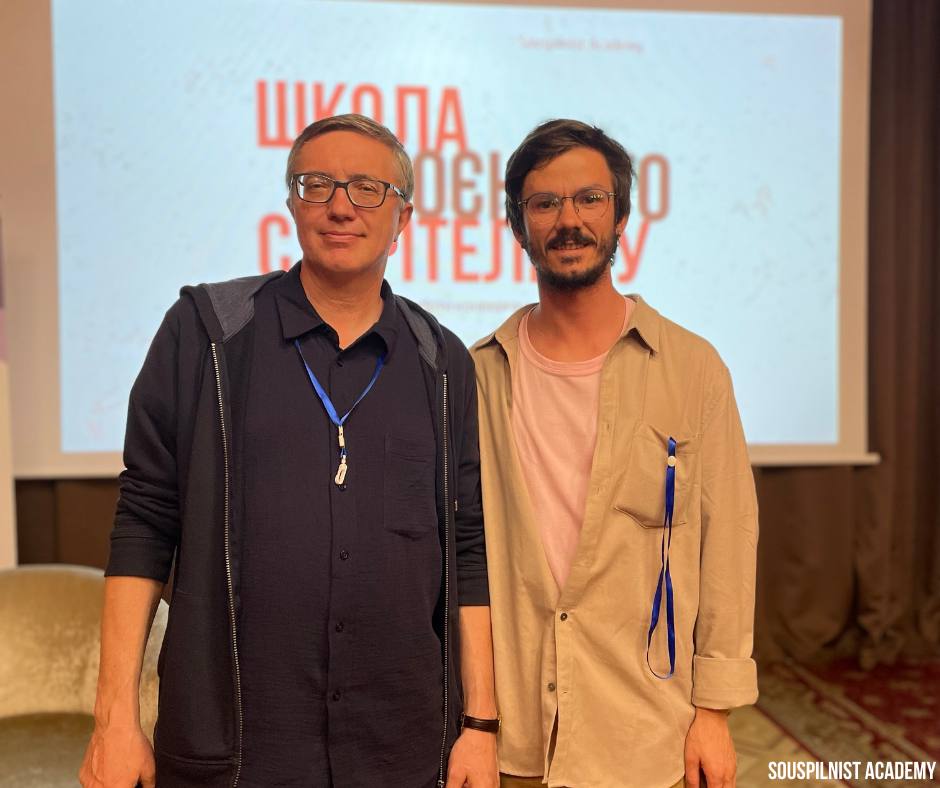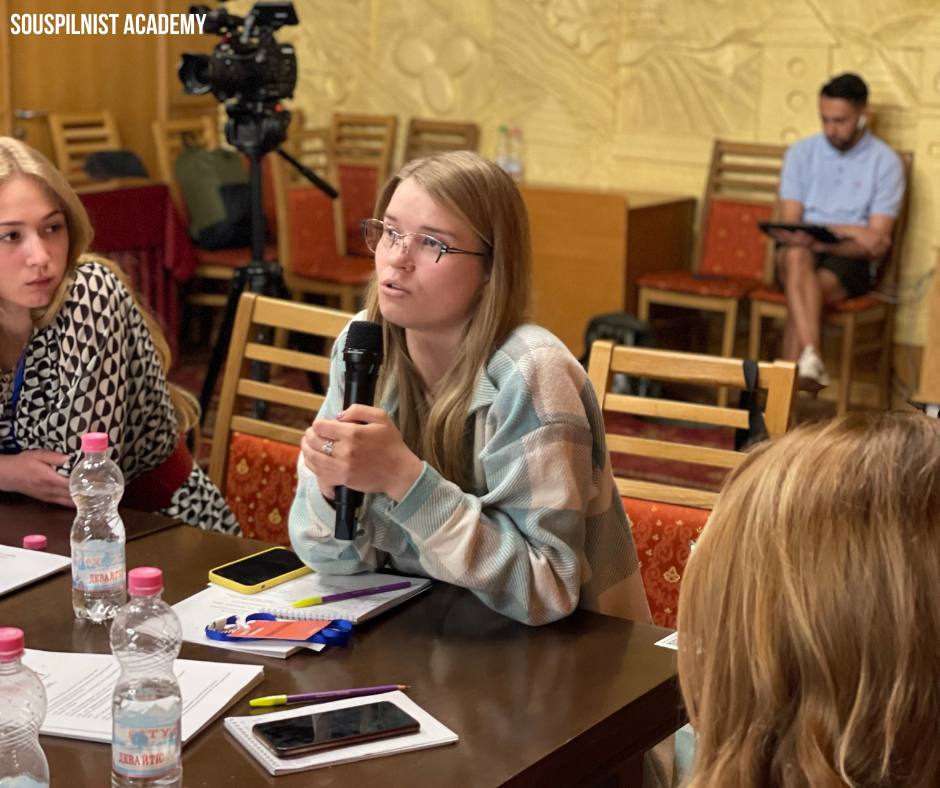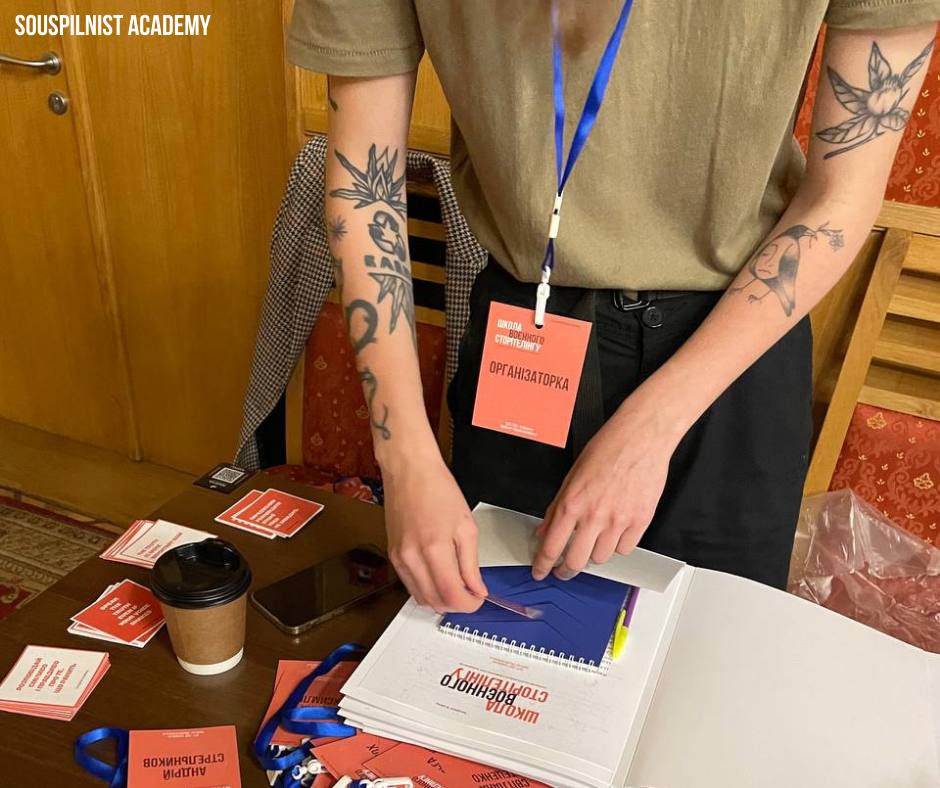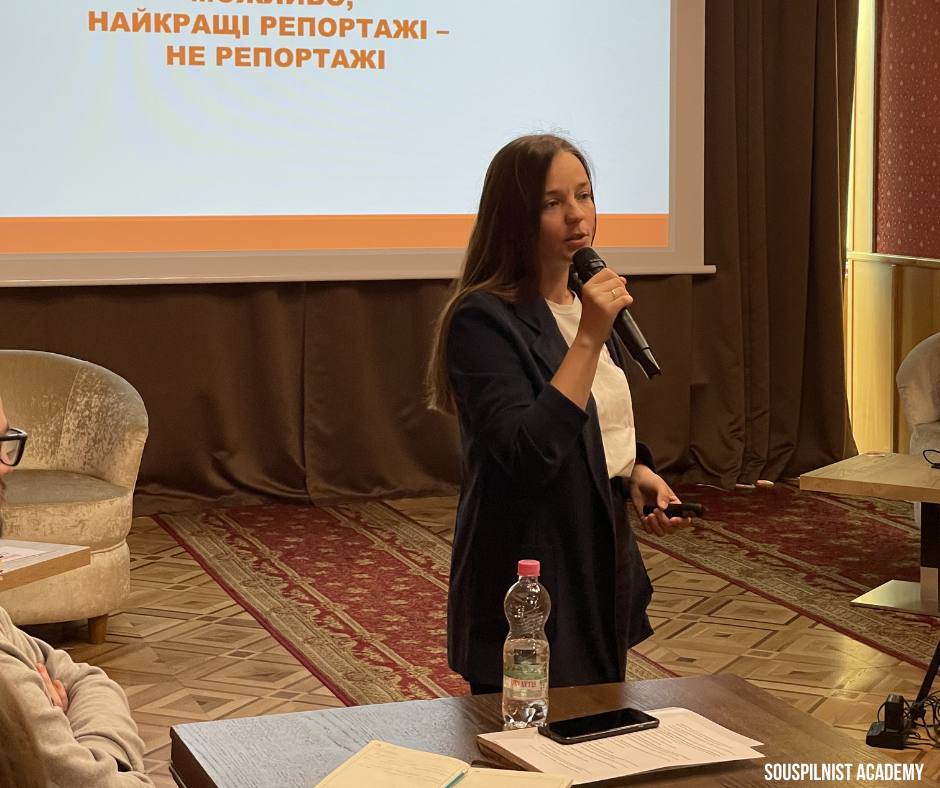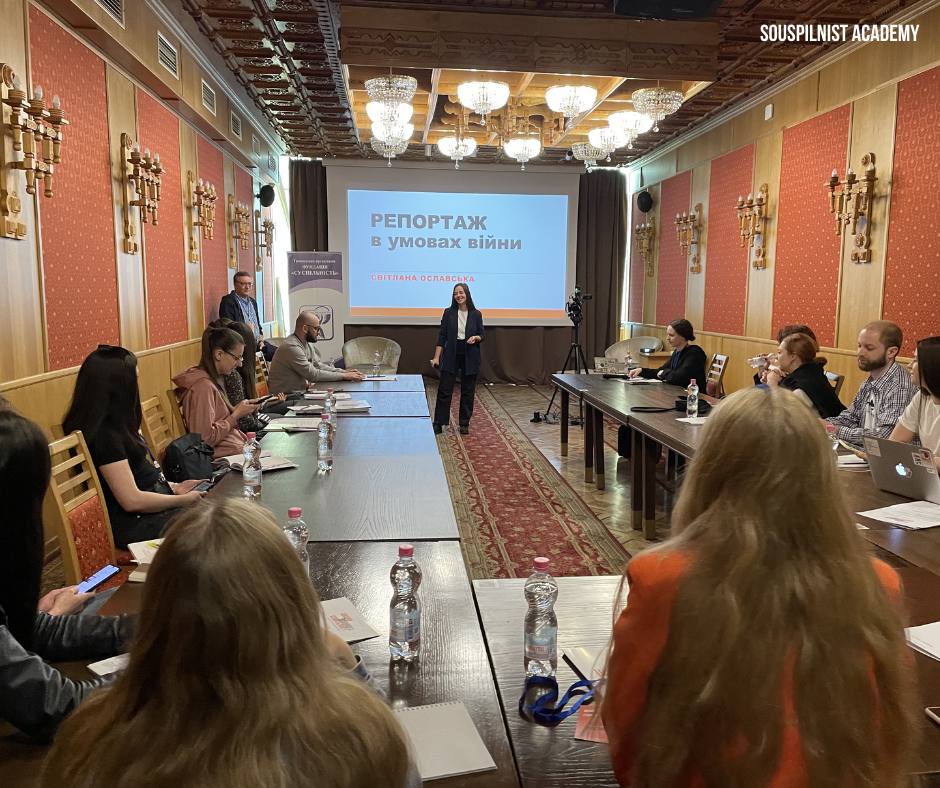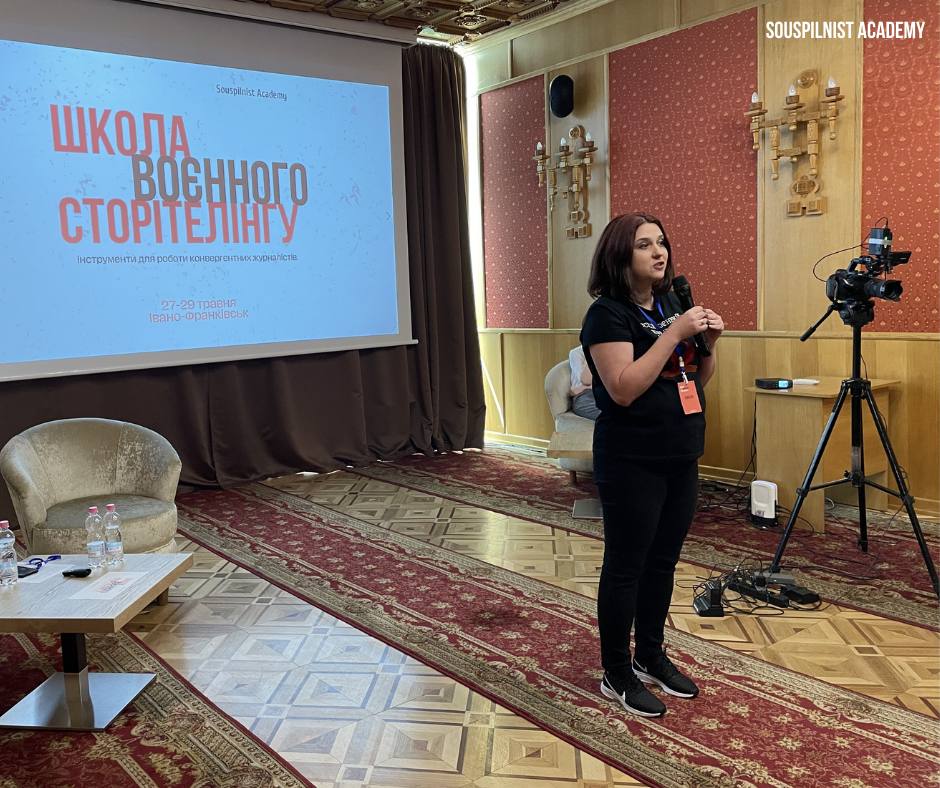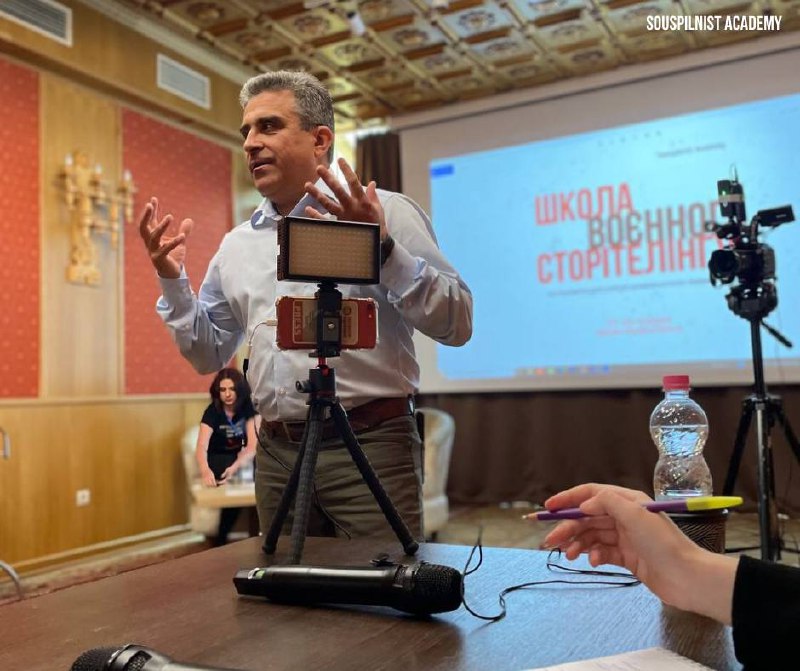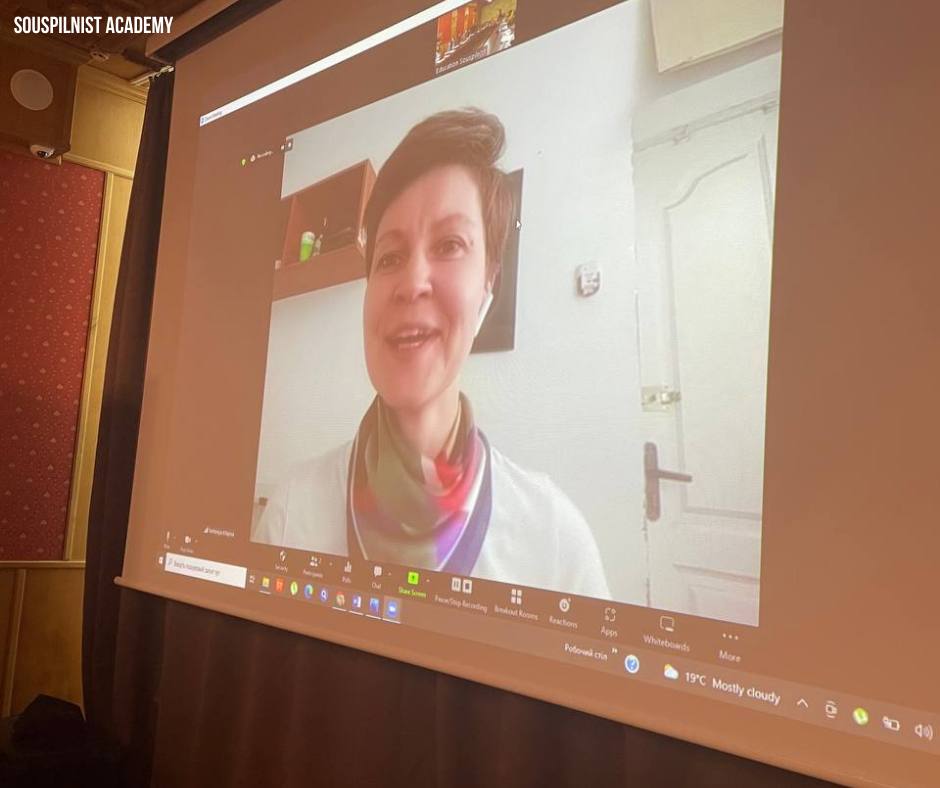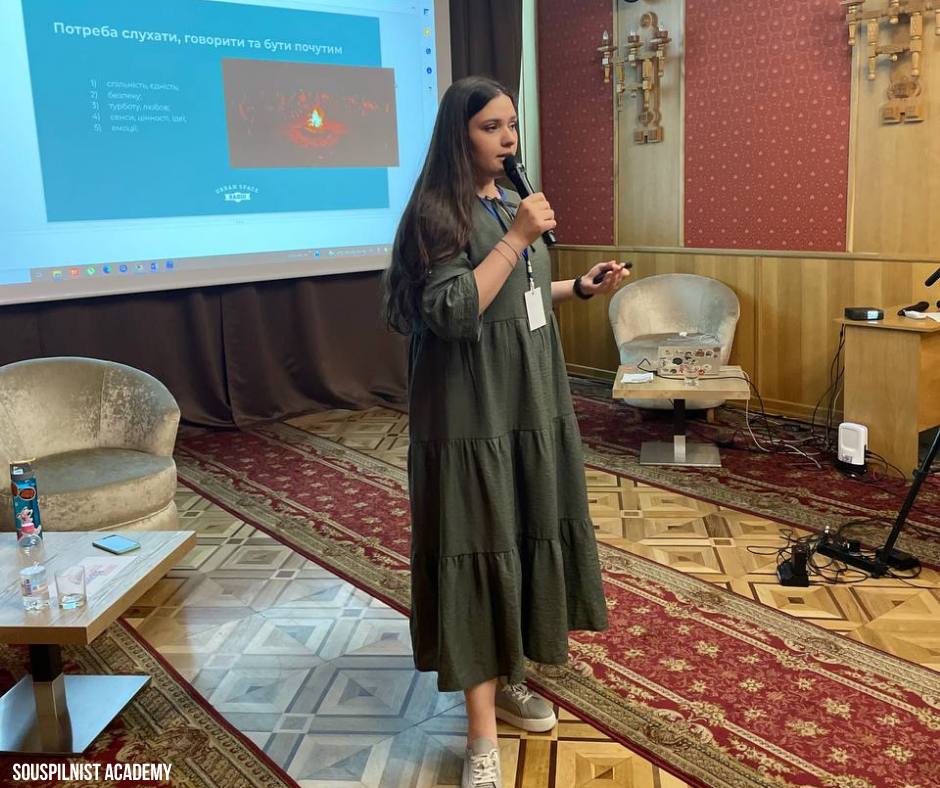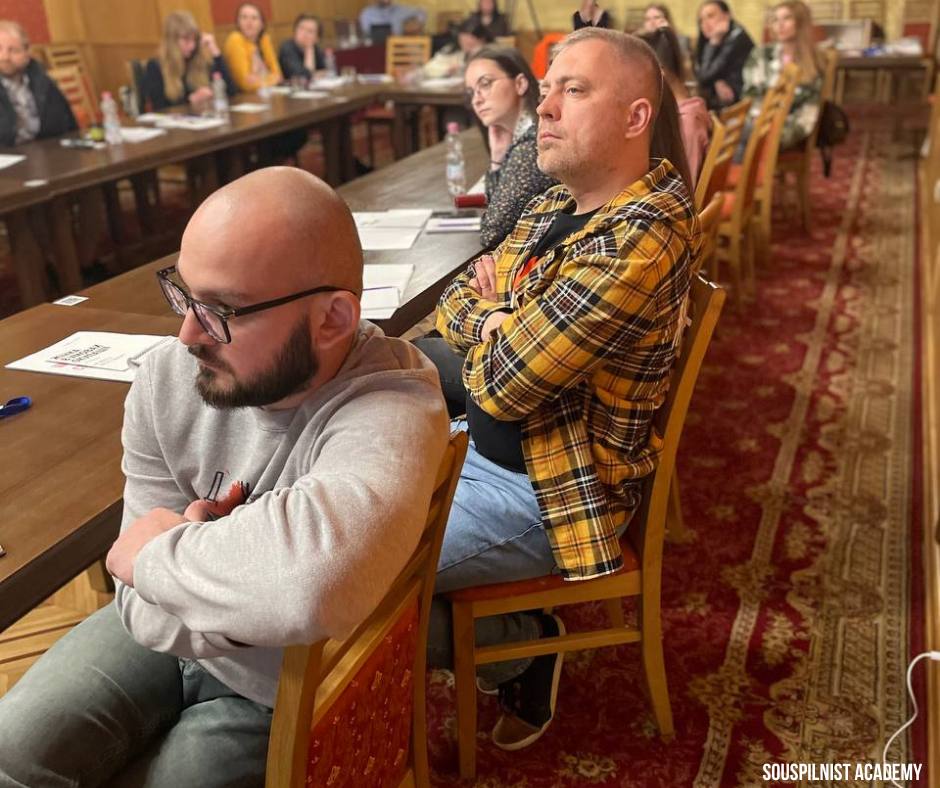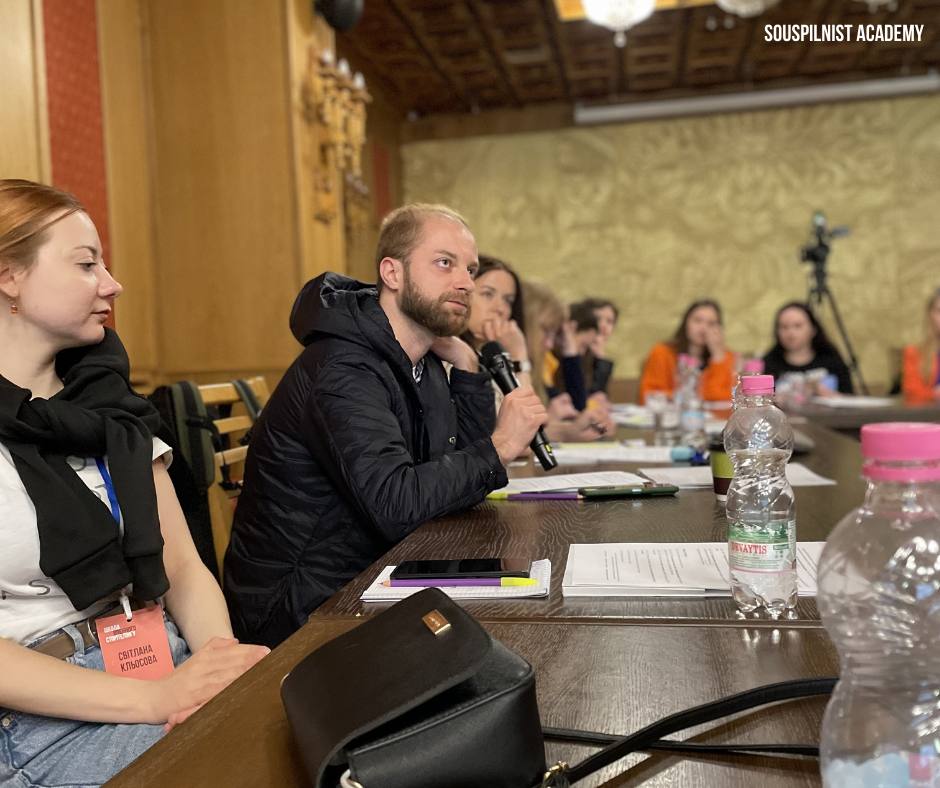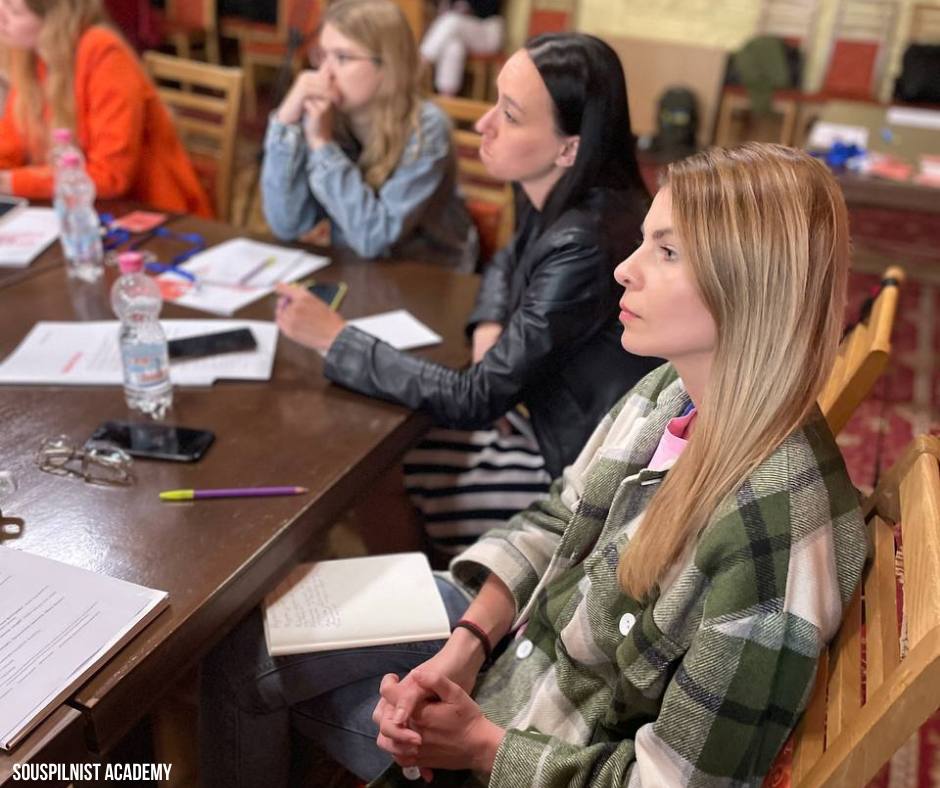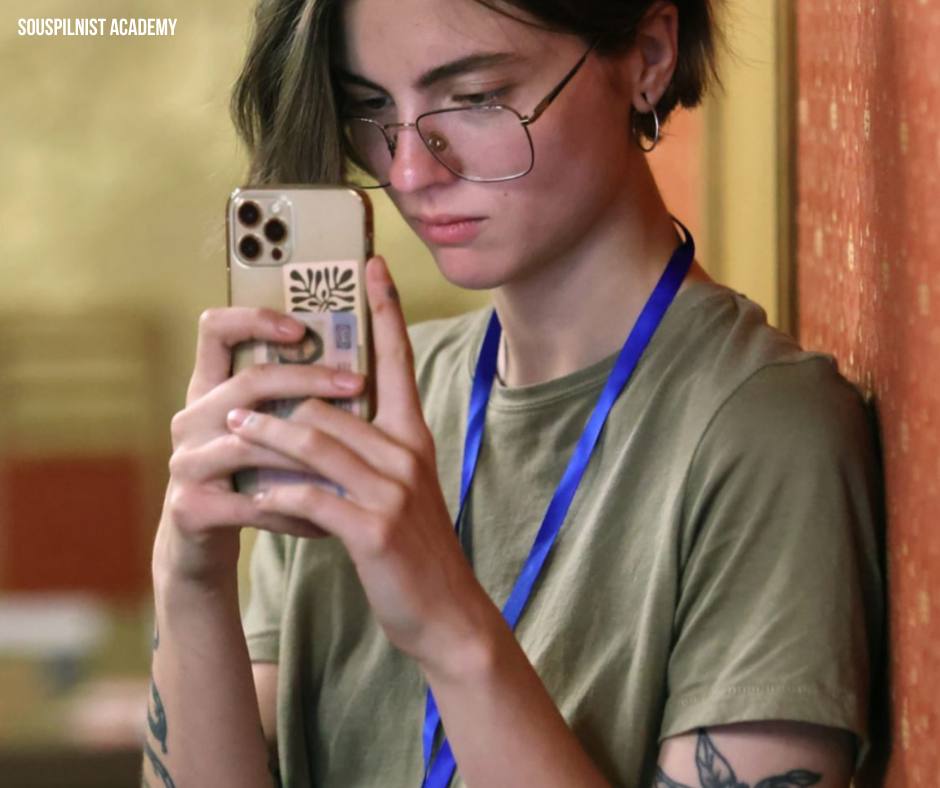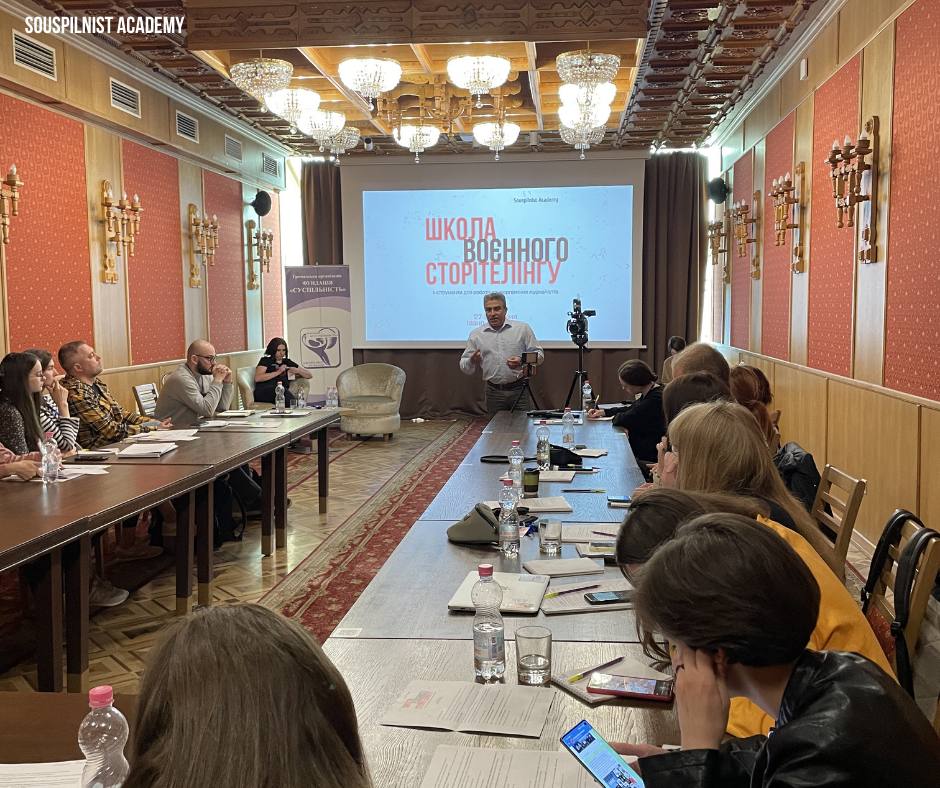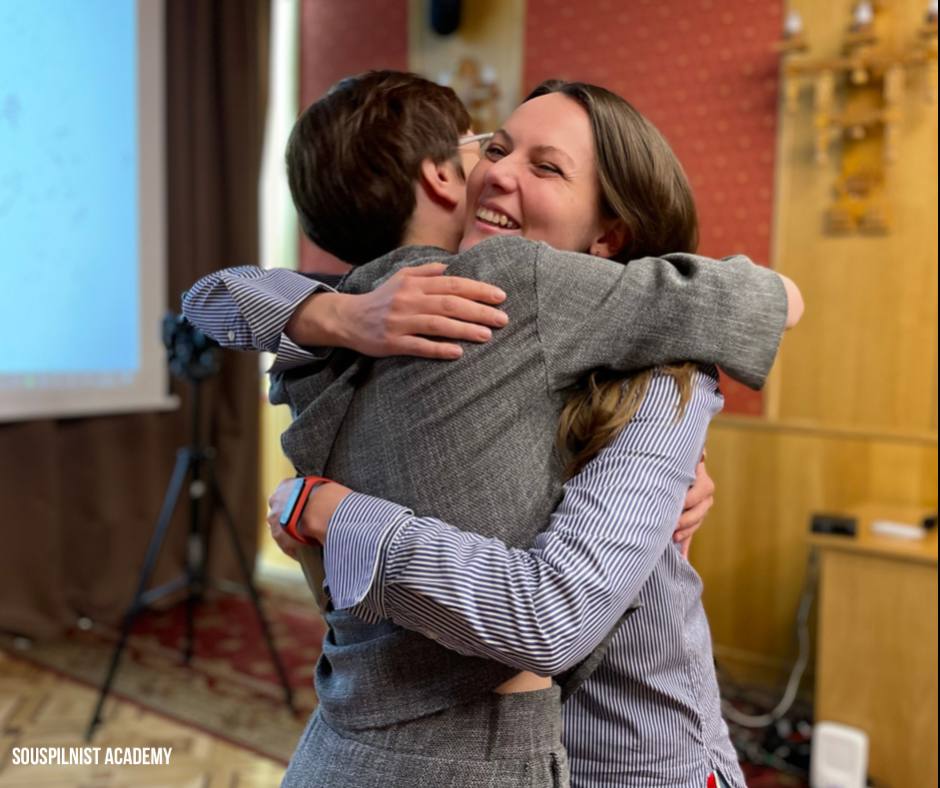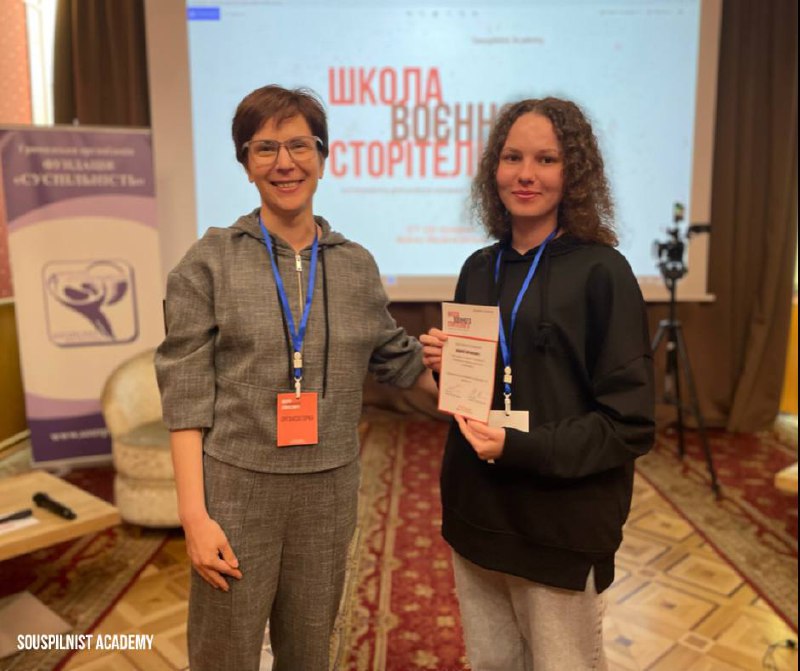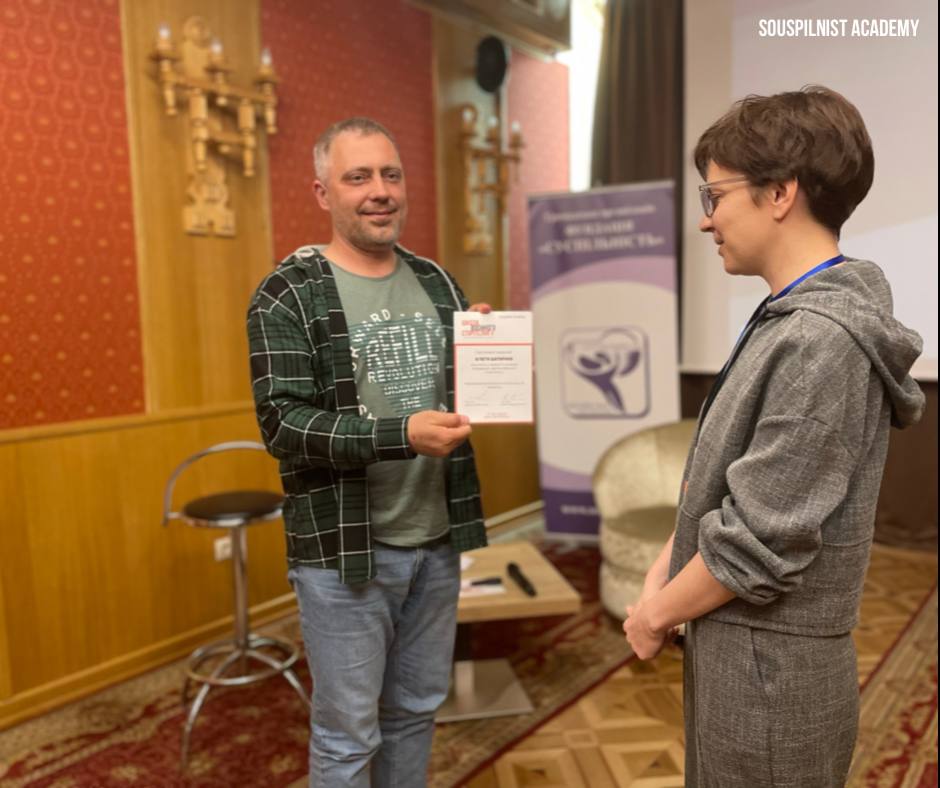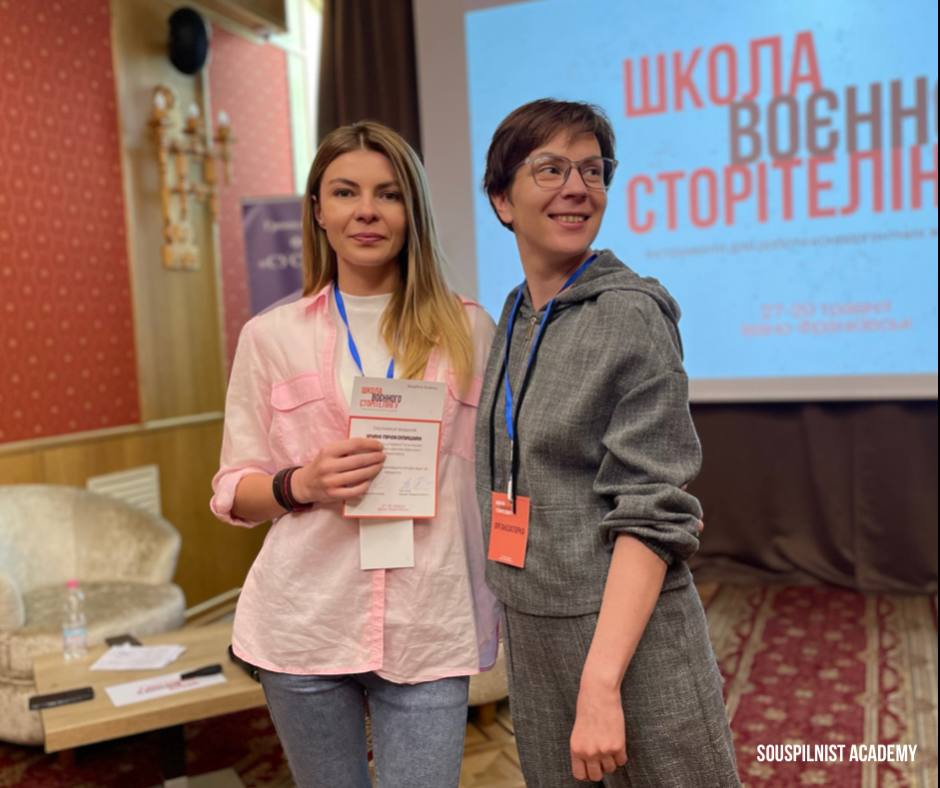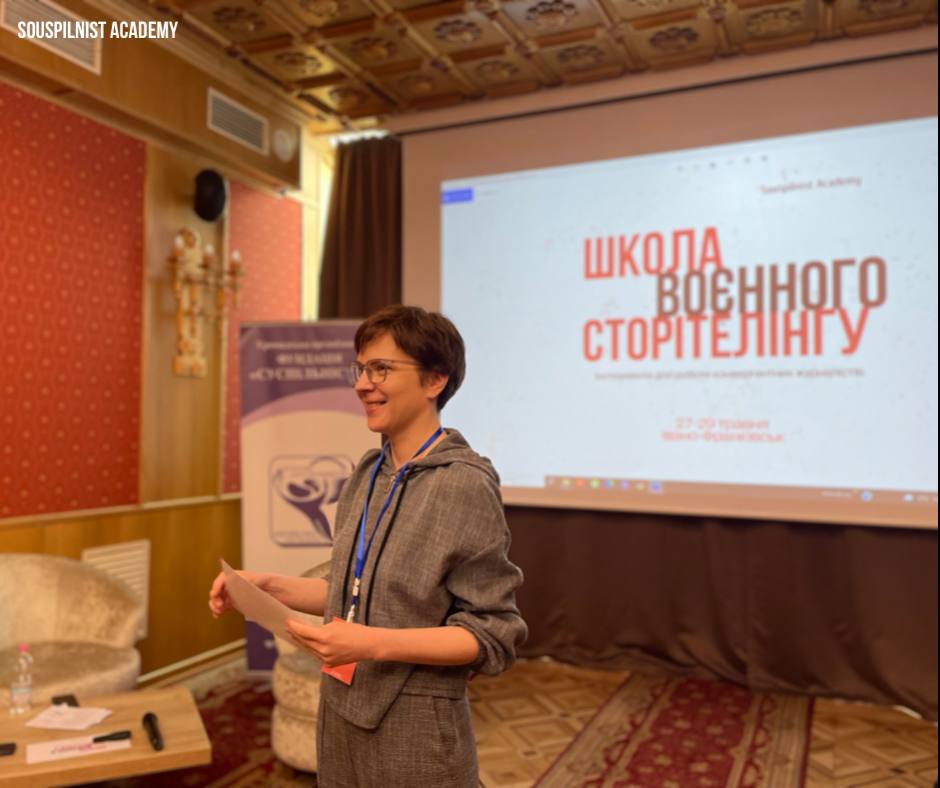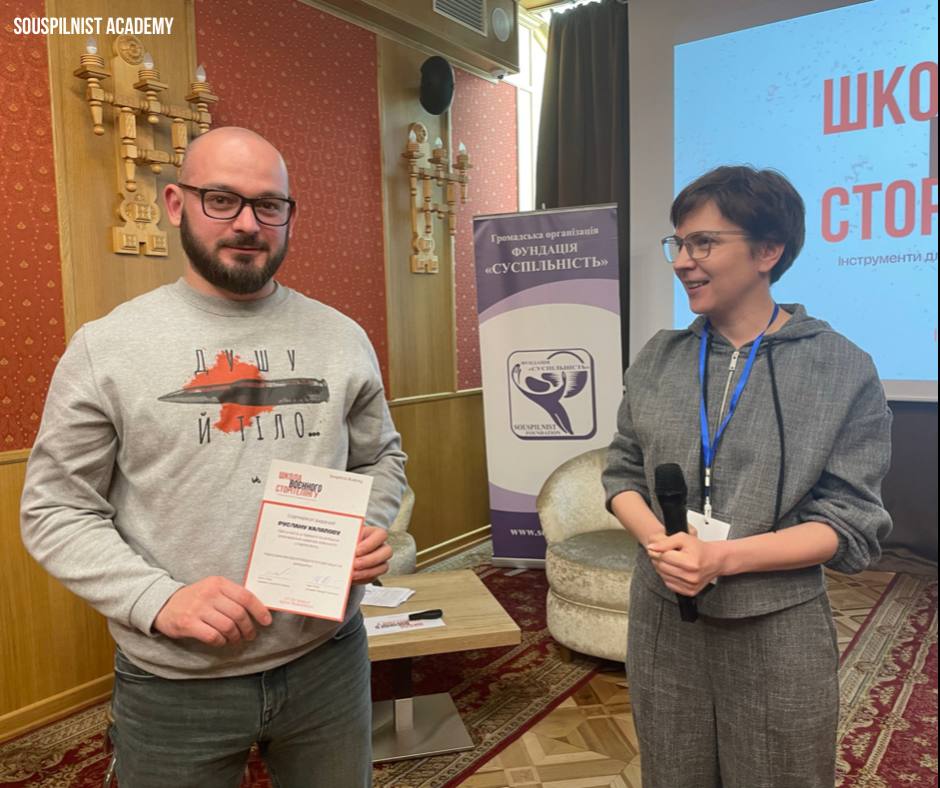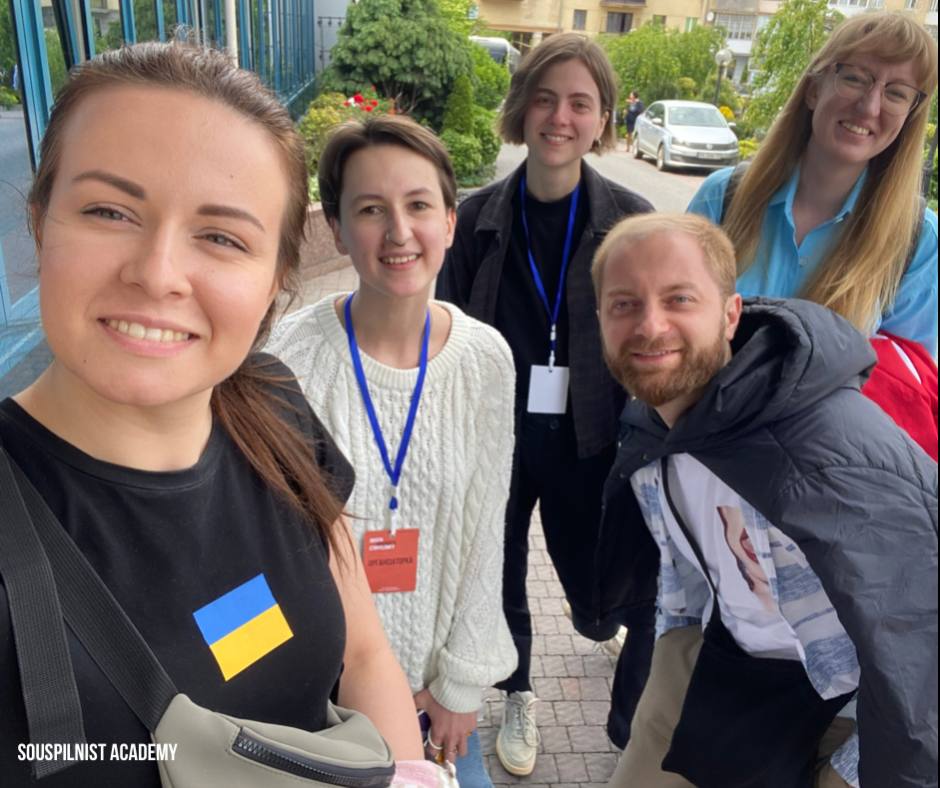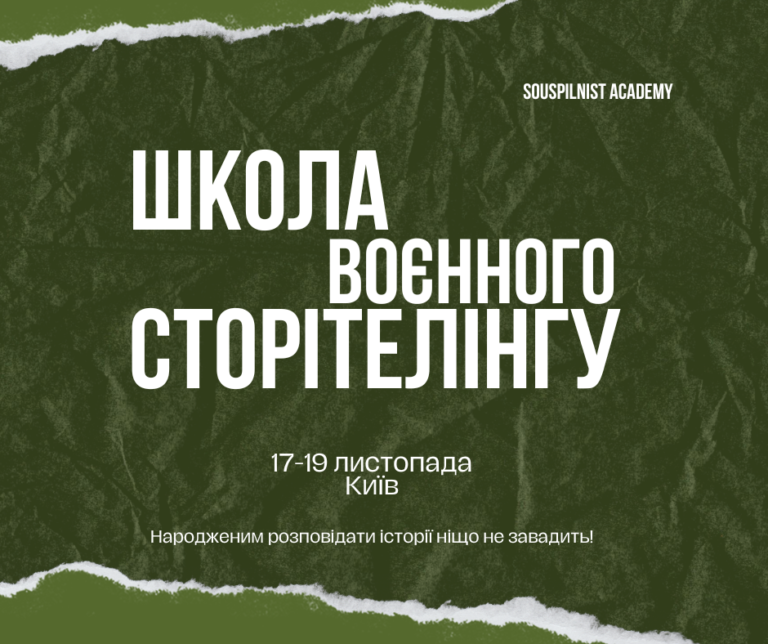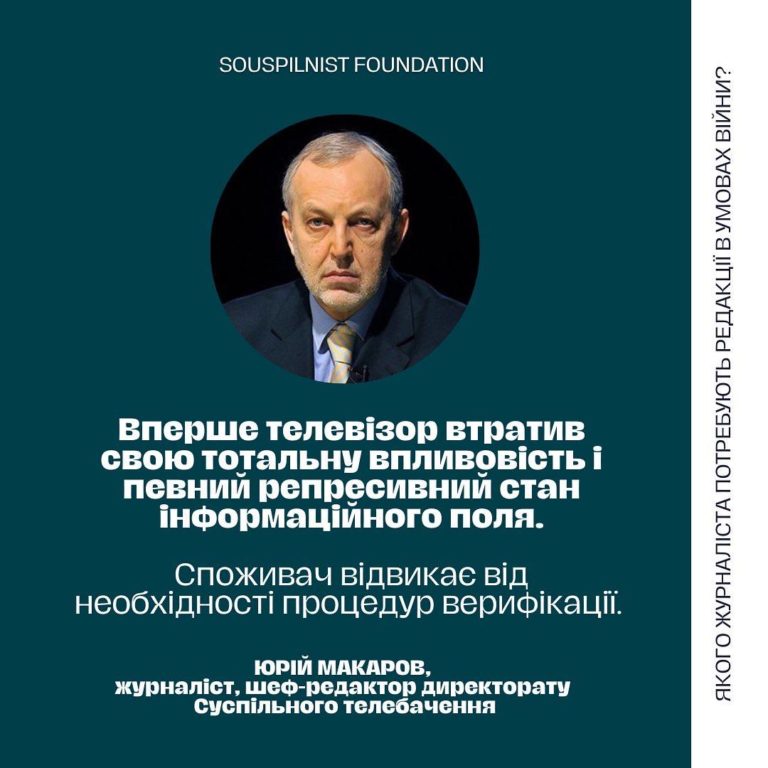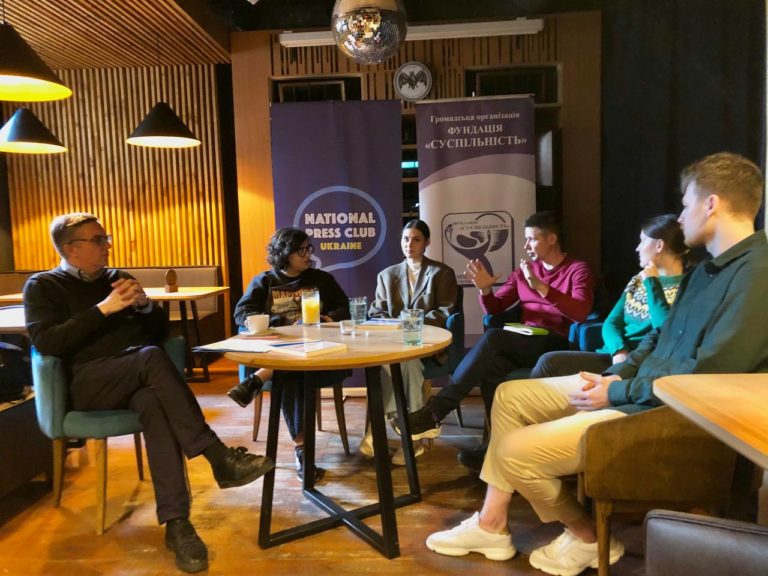The School of Wartime Storytelling was held in Ivano-Frankivsk on May 27-29, organized by Souspilnist Academy and Souspilnist Foundation.
The School of Wartime Storytelling included three days of intensive training and practice for 20 journalists from across the country (Kharkiv, Mykolayiv, Zaporizhzhia, Dnipro, Odesa, Kakhovka, Kropyvnytskyi, Khmelnytskyi, Kyiv, and Ternopil), taught by a team of prominent and experienced speakers.
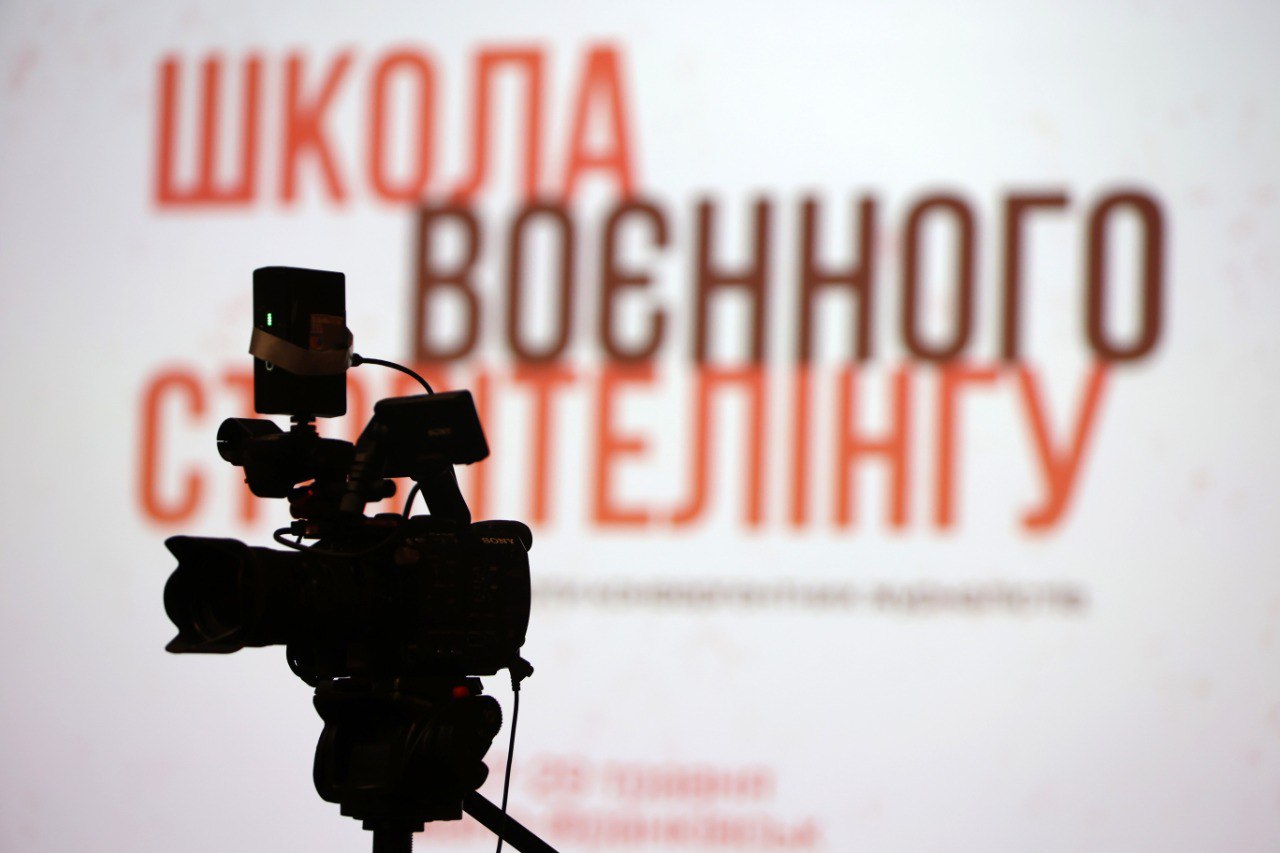
Day 1.
A society without stories is impossible.
On day one, Roman Horbyk, lecturer at Södertörn University (Sweden), media researcher, and screenwriter, explained the basics of wartime storytelling.
The speaker highlighted the universal principles of storytelling, namely:
- the structure is the key characteristic of a story. Stories have the beginning, the middle part, and the end;
- the storyline: a story is written chronologically;
- the plot: how a story is constructed. It is necessary to keep the audience intrigued, leaving the most interesting part for the ending.
“In wartime storytelling, war is not the core part of the narrative. Human stories take center stage.”
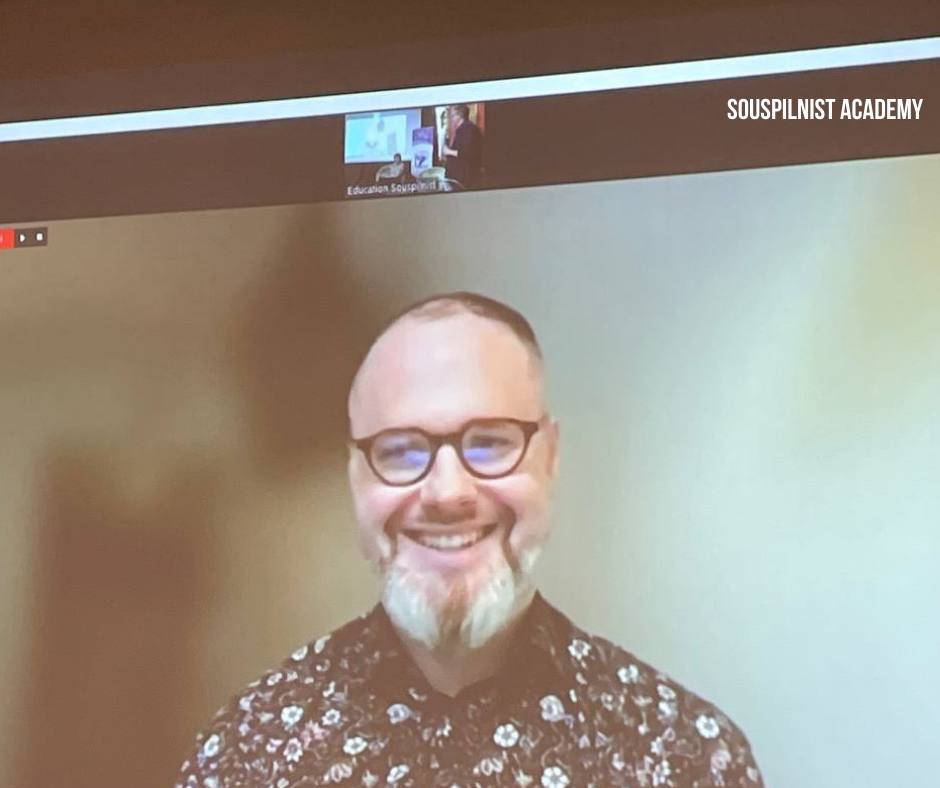
Mark Livin, the publisher of The Village Ukraine, TEDx speaker, and author of podcasts and books “In plain words” and “Storytelling for eyes, ears, and heart,” spoke about human stories in wartime.
“War is a very affecting thing, filled with lots of emotions. Conversations help us get out of shock.”
Tips from Mark Livin on helping a person reveal their story,
- bring disposable wipes if you are going to interview people during wartime. People very often cry while telling stories;
- another important point is empathy. Journalists should feel the full range of the person’s emotions. It is very difficult to write about wartime experiences without compassion;
- a third thing is reflection. When you communicate with the main character, you help them reveal something about themselves and tell a large audience about it;
- finally, it is necessary to make sure that the person is comfortable communicating with you. Offer them coffee and bring a small gift.
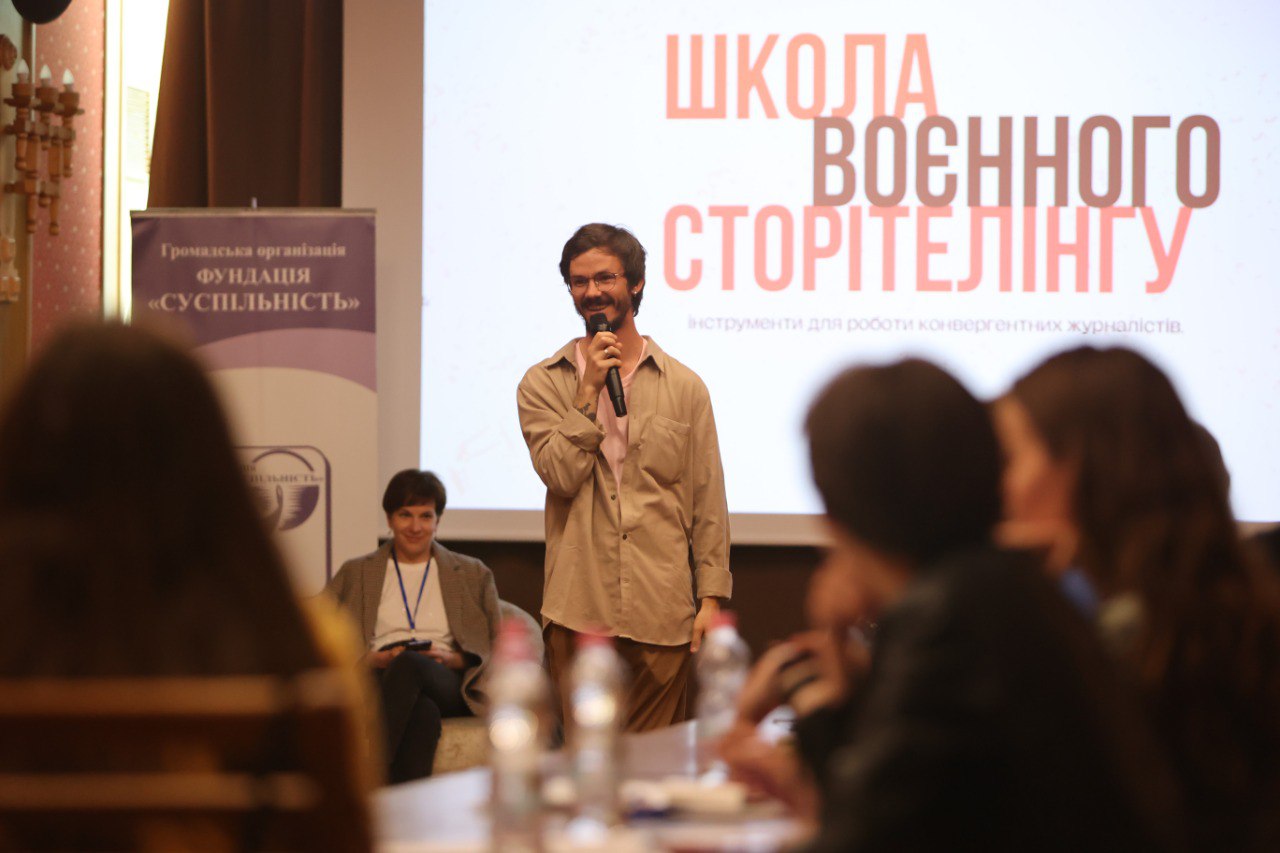
Tetiana Troshchynska, editor-in-chief of Hromadske Radio, spoke about how to work on sensitive topics.
“Interviews on sensitive topics are conversations with people having traumatic experiences. These now include russian crimes: rape, torture, and other forms of violence. If we are not sure we can talk to such people, it’s better to get someone else to do it.
When journalists take on a sensitive topic, they should ask themselves, “Why am I doing this?” Our task is to help punish evil, not just tell a story.”
Tetiana Troshchynska noted that when it comes to sensitive topics, individuals must give informed consent to tell and disseminate their story. Most preferably in written form. People also have the right to review material before publication. It is essential to use the appropriate vocabulary for the stories.
“Sensitive wartime stories mean empathetic support for the conversation. You must show the person that you’re here with them.”
Tetiana Troshchynska advised that such interviews be recorded. Also, during the conversation, it is necessary to remember that questions relating to someone’s emotional state are bad, just as are questions like, “Why?”
“We’re not there to judge human actions, including positively. No need to bring the person to tears. We needn’t think of ourselves as psychotherapists during the interview.
When someone is in the acute phase of trauma, they can give us inaccurate information, for example, providing an incorrect account or coming up with non-existent details. That’s why it’s not always necessary to tell a story based on “hot words.”
We should be ready for someone to call us the day after the conversation and ask not to publish the piece. They may as well call back in a week and say they want their story published.”
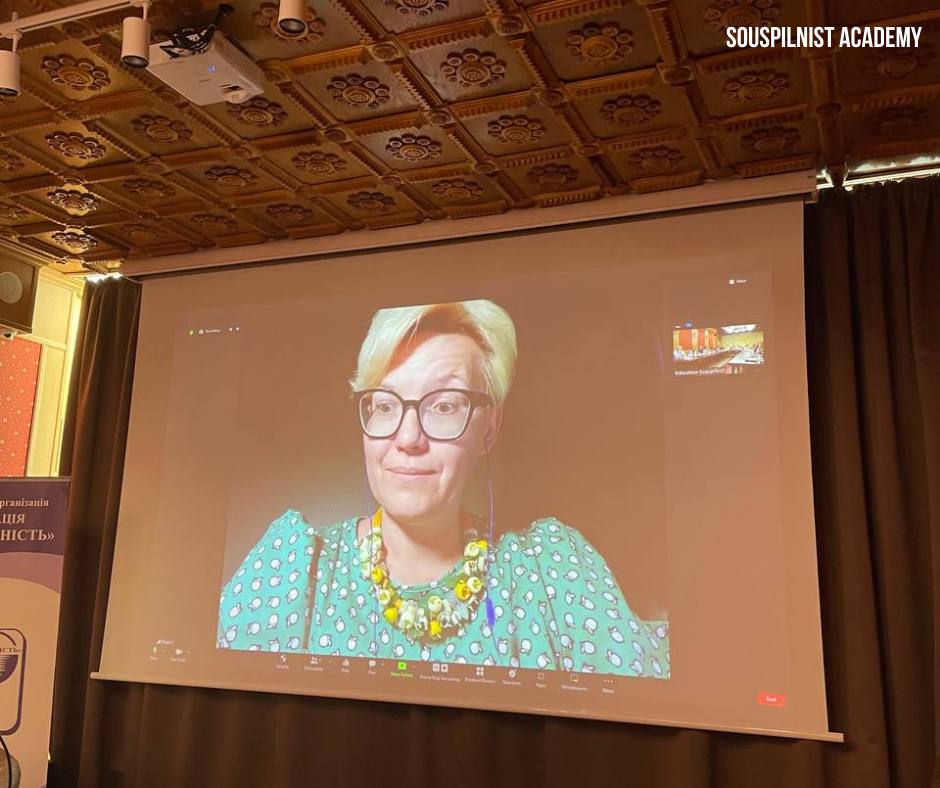
In addition, on the first day of training, the participants had a Q&A session with Tetiana Kozyreva, journalist and Pulitzer Prize finalist.
The Souspilnist Foundation team presented to the participants the Heroes of Freedom storytelling project, giving them a practical task: showing a human story that will evoke strong emotion in a text, video, or audio.
Day 2.
On the second day of the School of Wartime Storytelling, the independent reporter Svitlana Oslavska spoke about reporting during wartime.
Working on a story consists of several stages, namely:
- preparation (topic selection, research, contacts, and preliminary visits);
- work “in the field”;
- text/video/audio (with focus on the topic, language, structure, editing, and fact-checking).
“As for working “in the field,” everything could go wrong. But this may make the story special. Luck plays a significant role.
In conducting the training, Souspilnist Academy focuses on combining theory with practice. Therefore, the School’s second day was more practice-oriented.
The two fundamental principles of journalistic work are survival and no harm.
Olha Huzhva, media expert and founder of the Skhid Media Center, shared her practical insights into journalistic work in war zones and the newly liberated territories.
Radio NV host Dmytro Tuzov used his own pieces to show how to tell stories in interviews. Military correspondent at Channel 5, Yevhenia Kitayiva, shared her insights as a wartime reporter.
You need to be able to tell a story in different ways.
Vlad Krylevskyi, video producer for social networks (Radio Liberty, AMO Media), taught the participants how to tell stories in video and adapt them to different platforms.
As for caption videos, the main principle of creating them is the “Estimate” formula used to answer the question of what your video is about and why it is there.
There are the following essential points in creating quality videos for social networks:
- focus on one story;
- videos must be expedite or have added value;
- knowing your audience;
- choosing the format, not the story.
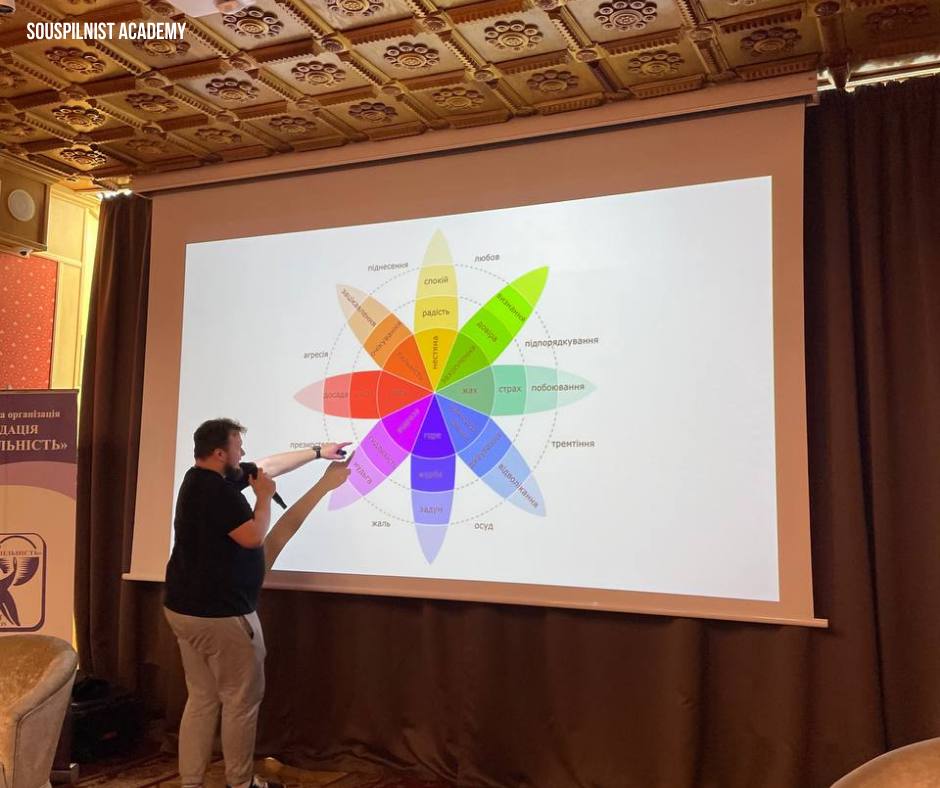
Another way to tell a story is to create podcasts. Nadiia Hulchuk, CEO of Urban Space Radio, taught the participants how to do it.
“Audio products work with the subconscious mind, and you’re literally the listener’s voice. Sounds can tell a story on their own. You’ve got all the sounds in the world to communicate with people. The human ear hears so well it can sense temperatures. Apparently, it can also identify our emotions when we speak to people, including the message we send to them and our way of talking.
You can talk in different ways, but love must remain unchanged.”
Day 3.
In the end, we discussed with Vlad Krylevskyi how to convey emotions with the help of photos and spoke with Nadiia Hulchuk about how to efficiently promote material.
The participants presented the pieces that they created during the training sessions and received their training certificates.
“During russia’s full-scale war against Ukraine, being able to tell stories is vital. We need to talk to others so as not to harm them.
I was lucky enough to be among the 20 journalists selected from across Ukraine to study at the School of Wartime Storytelling, organized by Souspilnist Foundation.
I was trained in how to create tolerant pieces that will be talked about, remembered, supported, and that are instructive. And not only that.
Have I learned anything? Time and my publications will show. There’s only one thing I know for sure: people, come on, let’s not stop during the war, let’s continue to study, holding firm on all fronts. We’re a nation that can never be conquered,” Ivanna Vlasyuk, a participant from Rivne working for ITV Media Group, shared her impressions.
Follow our news on Souspilnist Foundation’s website and Facebook page to learn about new events for media professionals.
